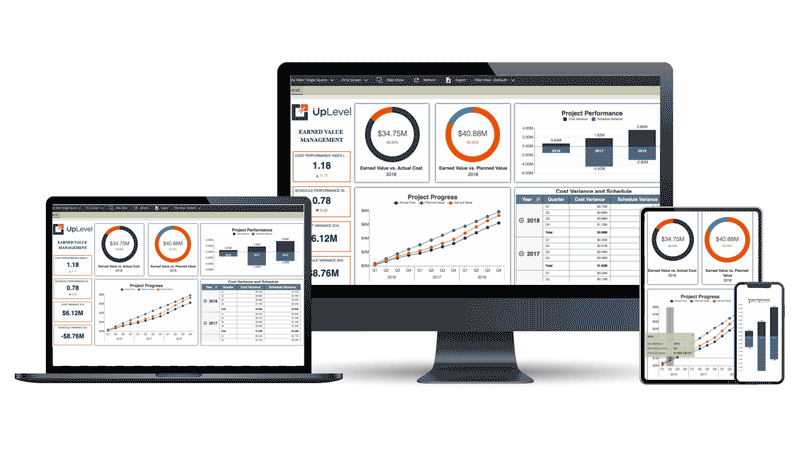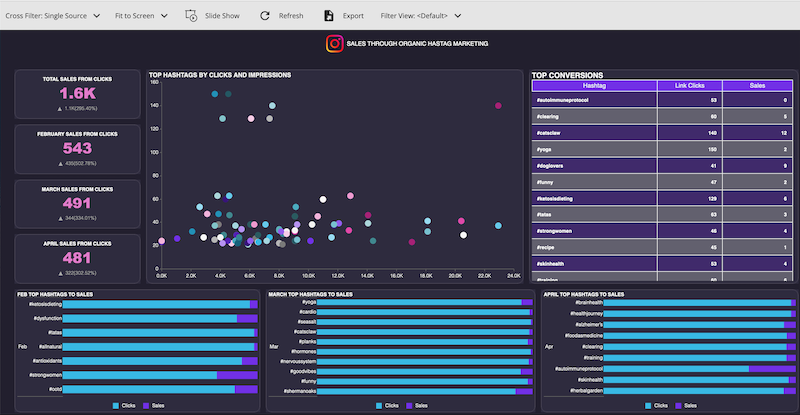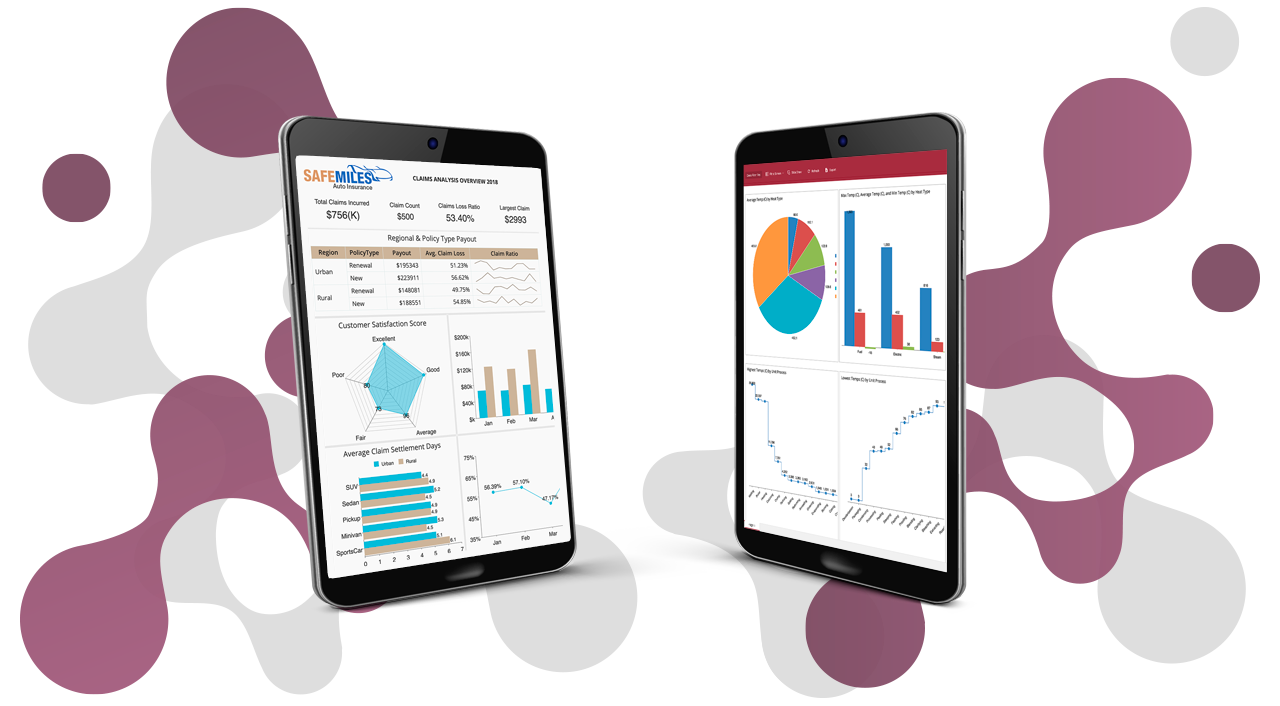Data is every organization's most valuable asset. You rely on data to plan policies, develop strategies, monitor your progress, and determine the ROI of your processes. Data is now the new oil; how well you use data can either give you a competitive edge or put you out of business.
Recent studies state that 90% of the world's total data was generated within the last two years. This has plunged many organizations into an information overload, consequently, the need to have more intelligent, intuitive means of analyzing and interpreting data is needed now more than ever.
What is Embedded BI?
Embedded business intelligence is the integration of business intelligence tools into everyday apps and software. Embedded BI can turn even the simplest of internal applications or commercial websites into a powerful platform for analyzing data.
Instead of rolling out a new BI platform to every end-user in the organization, BI capabilities can be woven into the organization's existing software applications reducing end-user push-back and minimizing the learning curve. Embedded business intelligence tools provide ad hoc reporting, interactive dashboards, scheduling, and distribution tools within your custom apps.
How Embedded BI Transforms SMBs
Business intelligence tools are essential for the success of all business sizes—from enterprise to small and medium-sized businesses (SMBs).
For SMBs, an embedded BI strategy empowers employees, end-users, and business owners. Embedding BI enhances data literacy through self-service capabilities and enables users to understand the story behind business data in a cost-effective way.
Here, we'll discuss several embedded BI benefits and discuss how an embedded BI strategy can transform small and medium-sized businesses.
Embedded BI Eliminates Data Silos
Businesses generate massive amounts of data. This data comes from customer behavior, sales, and financial data, inventory, and more.
Often, SMBs store this data in on-premise databases and spreadsheets. When data exists separately in silos, it's challenging to get a comprehensive (and real-time) insight into your business performance without interrogating multiple reports in separate locations.
That's where BI comes in—it brings all these disparate data sources together and combines them for easy analysis, and offers a single source of truth. With embedded, self-service BI you can visualize and share your insights among the company with a few clicks.

Self-Service BI can Lower BI Costs
Embedding BI can lower your total cost of ownership. You don't need to roll out new BI platforms for every new member in your organization since the capabilities are woven into your system workflow.
The integration of self-service BI frees your IT team to focus on more business-centric roles. With the elimination of routine data capturing and report requests, your IT staff has more time to focus on core priorities.

Wyn Enterprise Interactive Project Management Dashboard
Saves Time and Improves Productivity
Recent statistics show that more than 50% of enterprises leveraging BI tools make better decisions and have a clearer understanding of industry trends and patterns.
As a small or medium-sized business, you may not have the time (and resources) to analyze data captured from ERPs, CRMs, and even websites manually. Such a process is time-consuming, labor-intensive, and may not produce the desired results.
Data analysis through data visualization with interactive dashboards and end-user BI reporting saves time for you and your staff. End-users can build a variety of KPIs and dynamic report metrics, all from an embedded BI environment.
BI insights help you monitor your performance indicators easily, making it easy to identify flaws in the production process and correct them immediately.
Improved Insight Into Consumer Behavior
Businesses exist to meet their customer's needs. While you strive to create value for your clients, you also need to understand their perceptions about your products and their expectations. This helps you improve your current offerings and guides you through designing new products that match your customer's demands.
Business Intelligence gives you insight into your clients' purchasing patterns and trends. With this intel, you can create goods and services that match their tastes and preferences. You can also use this data to improve your current products. Customer satisfaction gives you a competitive edge and can significantly enhance your brand reputation.
Access to Sales and Marketing Intelligence
BI helps you understand how your clients and prospects interact with your website and similar sites at a deeper level. For instance, which websites do they visit frequently? How long do they spend on each site? Which pages do they follow, and which posts do they like? You can use this information to design more targeted marketing campaigns, plan sales, and manage productivity.
For instance, almost every business now has a Customer Relationship Management (CRM) system that tracks, records, and analyzes customer data and presents it in charts and tables. These systems help marketers track existing clients, interpret entire sales cycles, and are currently involved in decision-making processes than ever before.

Social Media Dashboard - Hashtag to Sales Conversions
Proactive Decision Making
Business dynamics keep on changing, and your success or survival depends on how fast you adapt to these changes. BI provides small and medium-sized businesses with the requisite data visibility to identify the correlations between separate data sets. Through dashboards and reports, it helps organizations pinpoint their current footing and make plans.
Improved data visibility helps you become more proactive in your decision-making. Instead of waiting to react to issues, you can use trends and patterns to foresee and avert them.
Enhanced data visualization enables you to pinpoint flaws in your production and marketing processes before they become serious setbacks.
Embedded BI Supports a Remote Workforce
Many SMBs scaled down operations and asked some staff to work from home during the COVID-19 pandemic. With workstations now spread across several virtual locations, relying on IT departments to gather and analyze business data may not be the best approach.
That's where embedded BI and self-service BI come in; they enable real-time data collection, analysis, and visualization by the end-users themselves.
Improved Employee Data Literacy
Last but not least—self-service BI allows users to ask more questions and find their answers through data visualization. When your employees can access and analyze data in real-time, they will become more data literate. They are empowered to work smarter, more independently, and be more productive in their roles.
In turn, improved data literacy creates a data-driven culture within your business.
Better Data Insights = Better Decisions
Let us show you how Wyn Enterprise can provide greater insights into your data.
Learn how to make data insights more attainable, actionable, and valuable. ↓





























